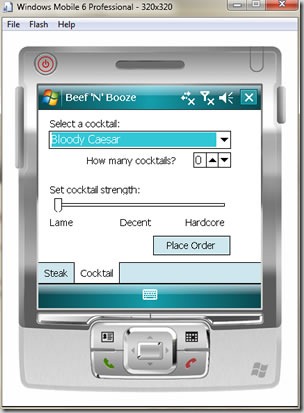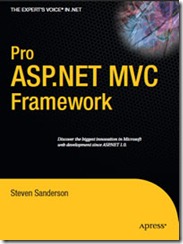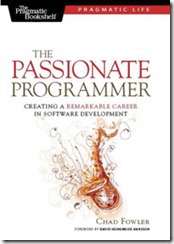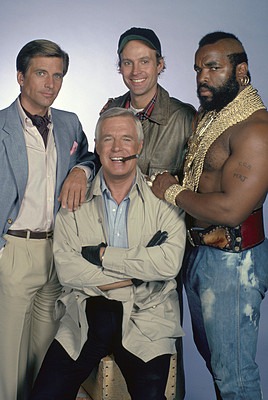Yes, I’m working on another tutorial on Windows Mobile 6 development. It’s on some of the standard user interface controls – here’s a preview:

I do try to make my example apps entertaining…
Yes, I’m working on another tutorial on Windows Mobile 6 development. It’s on some of the standard user interface controls – here’s a preview:

I do try to make my example apps entertaining…
This afternoon, I’m going to be at what I consider to be one of Accordion City’s best toy stores: Function 13 (156 Augusta Avenue), a place in Kensington Market that is part tech store, part art shop and part gallery.
I’ll be there for It’s Alive!, an open house featuring the work of Sheridan College’s Interactive Multimedia program. The event is open to all, and judging from some of the stuff I’ve seen on display at Function 13 and from Sheridan, it should be pretty interesting.
Here’s an old magazine ad by Honeywell for what was a newfangled thing for most people in the 1980s — electronic mail:
 Missing from the desk: a computer. Present on the desk: an ashtray.
Missing from the desk: a computer. Present on the desk: an ashtray.
Click the ad to see it at full size.
Here’s the text of the ad:
Electronic mail is a term that’s been bandied about data processing circles for years.
Simply put, it means high-speed information transportation.
One of the most advanced methods is terminals talking to one another.
Your mailbox is the terminal on the desk. Punch a key and today’s correspondence and messages are displayed instantly.
Need to notify people immediately of a fast-breaking development? Have your message delivered to their terminal mailboxes electronically, across the hall or around the world.
Electronic Mail is document distribution that’s more timely, accurate and flexible than traditional methods.
There’s no mountain of paperwork.
Administrative personnel are more effective.
Managers have access to more up-to-date information. Decision-making is easier.
Tomorrow’s automated office will clearly include Electronic Mail. But like the rest of the Office of the Future, it’s available at Honeywell today.
This article also appears in Canadian Developer Connection.
I’m reading a couple of tech books right now, and I plan to publish more in-depth reviews of them in the next couple of weeks. In the meantime, I thought I’d give you some quick reviews to give you a taste.
 The first book is Pro ASP.NET MVC Framework, published by Apress and written by Steven Sanderson. It’s been available in “beta” form as a PDF for the past couple of months, and as of this afternoon, the final PDF version has been released. I expect that the dead-tree edition should be hitting the shelves of your favourite bookstore, real or virtual, in a week or so.
The first book is Pro ASP.NET MVC Framework, published by Apress and written by Steven Sanderson. It’s been available in “beta” form as a PDF for the past couple of months, and as of this afternoon, the final PDF version has been released. I expect that the dead-tree edition should be hitting the shelves of your favourite bookstore, real or virtual, in a week or so.
This book covers the new way of developing ASP.NET applications, the MVC way. If you’ve read the “Gang of Four” book or any other book on design patterns (or any of Rocky Lhotka’s books on business objects), you know that MVC is short for “Model-View-Controller” and a pattern for separating an application into its business logic, presentation and interface. Perhaps you’ve looked longingly as the “cool kids” have used frameworks like Ruby on Rails and Django to build applications with greater speed and fun, and fewer errors and less futzing around with tedious development minutiae. You might have heard Scott Hanselman and Phil Haack talk about their work on ASP.NET MVC, or maybe you’d heard that Jeff Atwood’s Stack Overflow is implemented in ASP.NET MVC.
I myself come from the world of Rails and have noodled with Django. As such, find that I’d rather use an MVC-style framework in most cases. That’s why I’m happy that ASP.NET MVC has hit the official “1.0” stage – it’s available for download right now and will be included in Visual Studio 2010 as an official alternative to old-school ASP.NET.
The book is a great introduction to the concepts of MVC web frameworks in the context of ASP.NET. It starts by showing you how to get the ASP.NET MVC tools and templates onto your system and then walks you through the development of a sports store ecommerce site. The middle part goes into the features of ASP.NET MVC in greater detail, covering REST and routing, controllers and views, testing and adding Ajax to your MVC applications. The last section covers the goodies that ASP.NET gives you – authentication, members/roles/profiles, caching/compression and WebForms – and how to use them in the context of ASP.NET MVC.
It looks like a pretty promising read on a topic that I’m very interested in. Watch this blog for a review, and eventually, some code examples based on what I learn from the book.
 Regular readers of this blog will know that my favourite developer book of 2008 was Pragmatic Thinking and Learning: Refactor Your Wetware. They also know that there really wasn’t much about software development in particular, but developing the most important tool for software development: your mind.
Regular readers of this blog will know that my favourite developer book of 2008 was Pragmatic Thinking and Learning: Refactor Your Wetware. They also know that there really wasn’t much about software development in particular, but developing the most important tool for software development: your mind.
The publishers of Pragmatic Thinking and Learning have just put out a “new-ish” book, The Passionate Programmer, written by Chad Fowler. I say it’s “new-ish” because it could be considered a second edition of his book My Job Went to India (and All I Got was this Lousy Book).
The problem with My Job Went to India was that the title implied that it was largely about saving your job from outsourcing. In a recent podcast about the book, Chad said that the book’s title influenced the way he wrote it, and it ended up not being quite the book he wanted to write.
The Passionate Programmer is different; you could consider it a “refactoring” of My Job Went to India, and a good one, too. Rather than focusing on saving your job, it’s more about two very important things:
Those are two pretty tall orders for a book, but I’ve met Chad at a couple of conferences, and I know he likes to think big. I’ve just started into The Passionate Programmer and so far, I’ve thought “damn right!” at every bit of advice he’s given. As with Pro ASP.NET MVC Framework, watch this blog for the full review of this book.
This article also appears in The Adventures of Accordion Guy in the 21st Century.

That’s half-a-versary as in the celebration of something that took place half a year ago. It’s been half a year since I joined this organization:

…and I have to tell you, it’s been quite good.
The two things I value most about my job as Developer Evangelist for The Empire are the freedom and the ability to make a splash. The only working situation where I’ve had even more freedom and control of my destiny was back in the late 1990s at a consultancy that was just me and one other guy, and I’ve never had the reach nor the opportunities that I now enjoy as a Sith Lord.
 As a mobile worker, they cover my transportation costs too.
As a mobile worker, they cover my transportation costs too.
They’ve been pretty cool with my wacky ideas, from my re-appropriation of their image as “The Empire” to the stunt at Richard Stallman’s GNU auction at CUSEC to starting Coffee and Code, a weekly happening that most companies might dismiss as an attempt to loaf on company time.
I’ve been free to inject my offbeat, earthy sense of humour into my work, from celebrating InPrivate Browsing in Internet Explorer 8 to the time I made Bob Muglia – then a Senior VP, now President of the Server and Tools division — run away from me at a Los Angeles rooftop party when I serenaded him on accordion with a song about InPrivate Browsing, sung to the tune of Tina Turner’s Private Dancer:
I’m your private browser
A browser for po-orn
One-handed surfing for you…
And maybe, just maybe, I’ve either helped a software developer get some piece of information or consider using some Microsoft tool or technology. Maybe.
I’ve enjoyed my return to using Microsoft tools and tech, and there sure is plenty of that! It may take me another six months just to be able to say I’ve done a reasonable review of the stuff that I’m supposed to specialize in – the web and mobile spheres — and that’s just a piece of a much larger pie.
I relish the challenges of being an evangelist for The Empire. It’s easy to fling poop at Microsoft, and there are cases where the poop-flinging is warranted. It’s often harder to see that Microsoft is also behind some solid tech that drives our industry and is undergoing an interesting “sea change” in both its tech and its approach.
And most importantly, I enjoy the opportunities to make connections with people, both inside and outside Microsoft, from the students I met at CUSEC to developers I’ve met a various conferences and gatherings to my manager John Oxley and VP Mark Relph and especially with the Developer Evangelism team to which I belong, from:
…I’m very honoured to be “Howling Mad Murdock” for this A-Team.

This article also appears in Canadian Developer Connection.
 Today, as part of our EnergizeIT cross-Canada tour, Christian Beauclair, Rick Claus and Pierre Roman are heading out to Halifax. As part of their visit, they’ll be hosting a Coffee and Code event today from 1:30 p.m. to 5:00 p.m. at the Just Us Cafe at 1678 Barrington Street.
Today, as part of our EnergizeIT cross-Canada tour, Christian Beauclair, Rick Claus and Pierre Roman are heading out to Halifax. As part of their visit, they’ll be hosting a Coffee and Code event today from 1:30 p.m. to 5:00 p.m. at the Just Us Cafe at 1678 Barrington Street.
Coffee and Code is your chance to have a nice up-close-and-personal get-together with people from Microsoft, ask questions, let us know what you think and get to know us better. As an added bonus, it’s your chance to install the Windows 7 beta on your laptop: Christian, Rick and Pierre will be bringing installer discs and helping people get the new operating system (which we’ve been using on our production machines since January) installed.
For more details about today’s Coffee and Code and mini-installfest, see this earlier article.
This article also appears in Canadian Developer Connection.
You probably wouldn’t be surprised that Microsoft is holding a development contest that pits professional developers against student developers. You might be surprised that Microsoft is holding a development contest where the challenge is to build a PHP application.
You read that right: PHP. Microsoft’s web server, IIS (Internet Information Services) can run PHP as well as ASP.NET; in fact, it can even run both on the same site at the same time, so you can have apps like WordPress along with your ASP.NET-based apps.
Think of ASP.NET and PHP running on the same server as the great jam session with Spock and the space hippie from that old Star Trek “hippies in space” episode.
 See? We’re not Herbert!
See? We’re not Herbert!
Even more unexpected is that the beta for the 2.0 version of the Microsoft Web Platform Installer doesn’t do a “couple-of-clicks” installation of the expected stuff like IIS and SQL Server 2008 Express, it also provides a “couple-of-clicks” installation of PHP and WordPress.

That’s “FTW!” as in “For the Win” or “For the Web”, by the way.
The contest is pretty simple: the idea is to show the best application written in PHP and deployed on Windows. The app can be either:
That’s right: if you’re pressed for ideas or time to make a new application, it’s all right – you can take a PHP application that already exists, make the necessary changes so that it’ll run on IIS (and hey, for bonus points, make it tie into SQL Server instead of MySQL), and submit that as your contest entry!
Another twist to the FTW! Throwdown is that we’re getting student developers and professional developers to challenge each other. The pros have experience and resources on their side; students have youthful energy and fewer distractions going for them. Not since “Pirates vs. Ninjas” has there been a challenge like this!
One application developed or ported by students and one application developed or ported by professionals will be chosen from the submissions for the Ultimate Challenge, which will be a final bout at Microsoft’s Make Web, Not War conference. In that last match, it “Two apps enter! One app leaves!”. Simply put, one of the apps – either the student one or the professional one – will be declared the Ultimate Champion.
As they said in Highlander: “There can be…only one!”

We want to reward the best contestants for their efforts in the FTW! Throwdown, and we plan to do so with some pretty nice prizes, which include:
Naturally, the apps that you submit for the FTW! Throwdown need a place to live. If you don’t already have IIS hosting, our partners at myhosting and RackForce are offering a 60-day free hosting promotion.
The deadline for entering the FTW! Throwdown is Wednesday, June 3rd, 2009. Finalists will be announced on Friday, June 5th, 2009, and the main event where the student finalist faces off against the professional finalist happens on Wednesday June 10th, 2009.
If you’d like to know more about the FTW! Throwdown, visit the FTW! Throwdown site. I’ll be posting regular bulletins about the FTW! Throwdown on this blog, and you can follow the FTW! team on Twitter as the user @PHPOnWindows and the hashtag #FTW09.